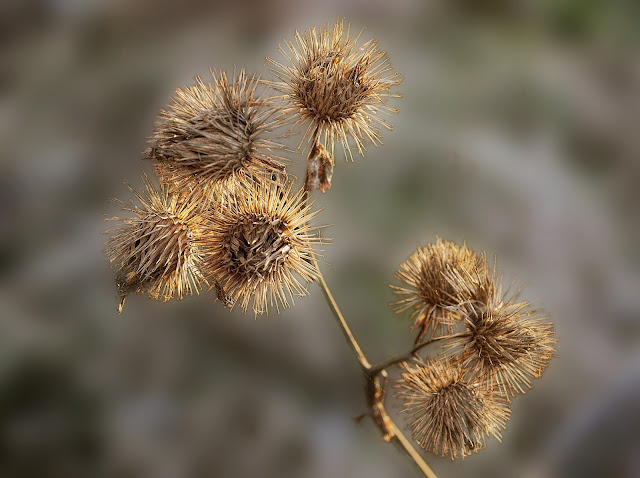Over
the last couple of months, I have been hunting for fungi in Milton
Country Park, with more success than I had expected. Fungi are
neither numerous nor prominent in the park and I have only ever seen
the odd one or two in the years I have been visiting there. But a
fairly determined search during December and January revealed quite a
few specimens, mostly small and mostly growing on trees or rotting
wood. The restricted habitat in which I found the fungi may simply
reflect the time of year, and there may well be more mushrooms and
toadstools in the park at other times of year, which I have simply
overlooked.
 |
| Jelly Ear Fungus - 18 December 2016 This fungus is said to be the tormented spirit of Judas Iscariot trying to escape |
I
feel I should attempt to identify my findings. However, I am no
mycologist, and a quick trawl through the relevant sites on the net
quickly persuaded me that any names I put to the fungi were unlikely
to be accurate. So, instead, I have used vernacular and generic
terms, which may still be wrong, but, because of their imprecision,
are unlikely to seriously mislead anyone.
 |
| Bracket Fungus - 13 January 2017 |
Fungi
occupy a shadowy in between position in the natural world, neither
plant nor animal. Many, including myself, may see them more as plants
without chlorophyll; but, there are larger differences which dictate
they are classified in a separate kingdom.
 |
| Bracket Fungus - 13 January 2017 Old bracket fungus now providing a suitable surface for moss to grow on |
In
some ways, they occupy a similar position in mythology and folklore:
of this world, but part of the unseen world of fairies, gnomes and
goblins. There are plenty of general, unspecific, references to the
importance of fungi in folklore, without any details being given.
The one exception, are fairy rings, which I have not seen in Milton
Country Park.
I
did find one fungus in the park that has folklore attached: the Jelly
Ear fungus. The Bible relates that Judas Iscariot hanged himself
from an elder tree in shame after betraying Jesus. This ear-like
fungus, which is found on elder, was thought to be the tormented
spirit of Judas trying to escape. It was originally name Judas's
Ear, which was later shortened to Jew's Ear - a name that has now fallen of favour because of its anti-semitic overtones.
Most of the fungi that I found were bracket fungi, a group of fungi of many different genera that grow on trees and are of a similar shape. There are both saprophytic and parasitic members in the group, the latter of which will prove fatal for the host tree. Bracket fungi are long lived and specimens at least twenty years old and weighing up to three hundred pounds have been reported.
 |
| Toadstools - 10 April 2016 |
I have found three types of fungus which are not bracket fungus: one - the stag's horn fungus which was growing on a rotten tree stump; while the other two appeared to be free living.
 | |
| Among the Leaf Mould - 22 December 2016 |
Finally, I found this tiny toadstool growing among the rotting leaves. My first reaction was that it was immature, but clearly its fruiting body is fully developed, and this must be its final size.
Mites Eggs
 |
| Mites Eggs - 22 January 2017 |
While
photographing some fungi on a fallen twig, I noticed small white dots
on a nearby fallen leaf. I assumed that this was some form of fungi.
The photograph reveals that each white dot, about the size of a
pinhead, is attached to the leaf by a very slender stalk. After
further research, I have concluded that these are in fact mites'
eggs. I went back two days later to try to get a better photograph,
but by then wind, rain, and passing animals had disturbed the leaves,
and the affected leaf was lost.
The Fungus Amongst Us
Polypore - Wikipedia
Why This Weird Looking Mushroom is Called “Jew’s Ear”
Tree Bracket Fungus
Xylaria hypoxylon (L.) Grev. - Candlesnuff Fungus
Next: Ivy
Further Reading
Fungi Families/Types Identity ParadeThe Fungus Amongst Us
Polypore - Wikipedia
Why This Weird Looking Mushroom is Called “Jew’s Ear”
Tree Bracket Fungus
Xylaria hypoxylon (L.) Grev. - Candlesnuff Fungus
Next: Ivy








